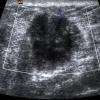CYBERMED LIFE - ORGANIC & NATURAL LIVING
CYBERMED LIFE - ORGANIC & NATURAL LIVING
 A breast ultrasound is an imaging technique commonly used to screen for tumors and other breast abnormalities. The ultrasound uses high-frequency sound waves to produce detailed images of the inside of the breasts. Unlike X-rays and CT scans, ultrasounds don’t use radiation and are considered safe for pregnant women and breast-feeding mothers.
A breast ultrasound is an imaging technique commonly used to screen for tumors and other breast abnormalities. The ultrasound uses high-frequency sound waves to produce detailed images of the inside of the breasts. Unlike X-rays and CT scans, ultrasounds don’t use radiation and are considered safe for pregnant women and breast-feeding mothers.
Why Is a Breast Ultrasound Performed?
Your doctor may perform a breast ultrasound if a suspicious lump is discovered in your breast. An ultrasound helps your doctor determine whether the lump is a fluid-filled cyst or a solid tumor. It also allows them to determine the location and size of the lump.
While a breast ultrasound can be used to assess a lump in your breast, it can’t be used to determine whether the lump is cancerous. That can only be established if a sample of tissue or fluid is removed from the lump and tested in a laboratory. To obtain a tissue or fluid sample, your doctor may perform an ultrasound-guided core needle biopsy. During this procedure, your doctor will use a breast ultrasound as a guide while they remove the sample of tissue or fluid. The sample will then be sent to a laboratory for analysis. You may feel nervous or frightened while waiting for the biopsy results, but it’s important to keep in mind that four out of five breast lumps are benign, or noncancerous.
Aside from being used to determine the nature of a breast abnormality, a breast ultrasound may also be performed on women who should avoid radiation, such as: